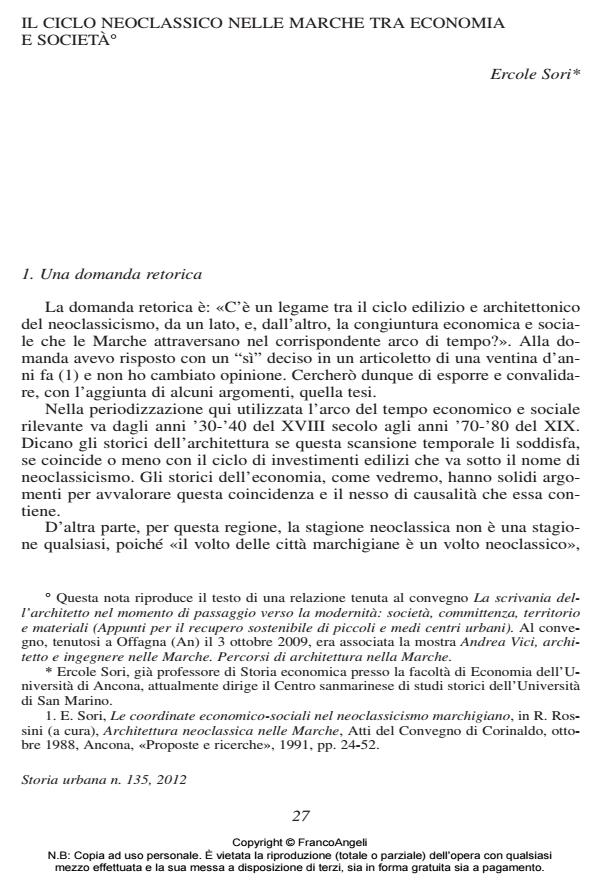Neoclassic cycle in the Marche regarding economics and society
Journal title STORIA URBANA
Author/s Ercole Sori
Publishing Year 2013 Issue 2012/135
Language Italian Pages 16 P. 27-42 File size 2960 KB
DOI 10.3280/SU2012-135002
DOI is like a bar code for intellectual property: to have more infomation
click here
Below, you can see the article first page
If you want to buy this article in PDF format, you can do it, following the instructions to buy download credits

FrancoAngeli is member of Publishers International Linking Association, Inc (PILA), a not-for-profit association which run the CrossRef service enabling links to and from online scholarly content.
There is a close connection between the socio-economic framework of the Marche region in the period between the 1730s and the 1870-1880s and the neoclassic cycle of construction and architecture. During the transition from the 18th to the 19th century important variations regarding quantity, functionality, and the short term context of building construction can be seen. In particular, there was: a) an overall reduction in the number of interventions; b) a change in the quantity of buildings commissioned by the Church or by the nobility; c) an expansion in theatre construction; d) a reduction in construction of urban facilities; e) significant short-term downturns in the economy (the Jacobin-Napoleonic period; the "years of famine" 1764,1767 and 1816-1817). Through neoclassic style architecture, urban centres were freed of their walled-in confines, effectively leaving the "old" inside the walls, while the "new" either quickly moved toward the external or took over the internal areas affected by demolitions which had taken place in the historical centre. The drop in agricultural prices during the Restoration impacted heavily on investments in new constructions but this was counterbalanced by new plans that were counter-cyclical, or almost "Keynesian". The neoclassic cycle took advantage of certain mechanisms for growth and diffusion across territories with a) new and reinforced financing mechanisms, and b) competition and imitation both between urban centres, especially with the terra a civitas promotion, and between small and large urban centres. The reawakening of neoclassic building called for adequate cooperation between entrepreneurs and manufactures in the building materials sector (brick and lime production, for example). The "cellular" modularity of construction was accompanied by an even more extensive modularity of typologies - urban and social - of neoclassic manufacturing.
Keywords: Neoclassic architecture Economics Marche, region Urban growth
Ercole Sori, Il ciclo neoclassico nelle marche tra economia e società in "STORIA URBANA " 135/2012, pp 27-42, DOI: 10.3280/SU2012-135002